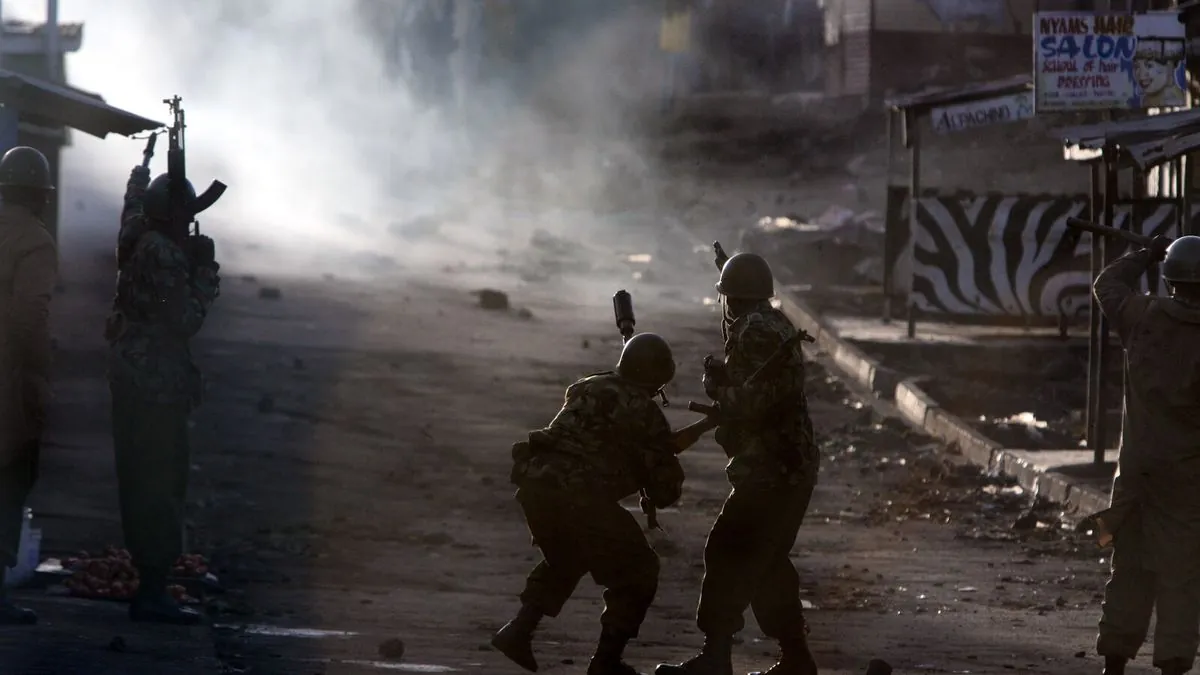Press Freedom Under Siege: Kenya's Journalists Face Mounting Threats
Kenyan journalists confront escalating violence amid anti-government protests. As press freedom deteriorates under President Ruto's administration, the U.S. grapples with balancing geopolitical interests and human rights concerns.

In a troubling development for press freedom in Kenya, journalists are facing increasing dangers while covering anti-government protests. The situation has raised concerns about the state of media rights in the East African nation, which has long been considered a beacon of democracy in the region.
Catherine Wanjeri wa Kariuki, a TV journalist for MediaMax Network, became a victim of this escalating violence in mid-July 2024. Despite wearing a press vest and carrying a labeled microphone, Kariuki was shot three times with rubber bullets by police while reporting on protests in Nakuru County. Her experience is not isolated, as numerous journalists have been targeted during the ongoing demonstrations.
The protests, which began in mid-June 2024, were initially sparked by proposed tax hikes aimed at addressing Kenya's substantial debt. However, they quickly evolved into broader demonstrations against government corruption and mismanagement. The situation escalated on June 25, 2024, when protesters stormed the parliament building following the approval of a controversial finance bill. Police response has been increasingly violent, resulting in at least 50 protester deaths.

Kenya's importance as a regional powerhouse and key U.S. ally adds complexity to the situation. In June 2024, Kenya was designated as a major non-NATO ally of the United States, the first in Sub-Saharan Africa. This status puts Kenya on par with partners like Australia and Japan, highlighting its strategic significance.
The country's press freedom, once enshrined in the 2010 constitution, has been steadily eroding. Since William Ruto's election as president in August 2022, the media landscape has faced numerous challenges. These include the firing of press group heads under political pressure, the shooting of Pakistani journalist Arshad Sharif by Kenyan police in October 2022, and financial blows to media houses through restrictive advertising policies.
The U.S. response to these press freedom issues has been muted, disappointing many Kenyan journalists. Eric Oduor, secretary-general of the Kenya Union of Journalists, expressed frustration at the lack of strong U.S. advocacy for human rights and press freedom in Kenya.
"The U.S. should have really come out and defended human rights in Kenya, of course press freedom being one of them."
In response to the mounting threats, Kenyan journalists held protests across the country in late July 2024. They marched through Nairobi's business district, chanting "journalism is not a crime" and demanding thorough investigations into attacks on media professionals.
As Kenya grapples with these challenges, it's worth noting that the country has a rich history and diverse economy. It gained independence in 1963 and has since become the largest economy in East Africa. Known for its wildlife and technological innovations, Kenya has also faced significant challenges, including corruption and terrorist attacks.
The current situation leaves journalists like Kariuki feeling uncertain about the future of press freedom in Kenya. As the country navigates this turbulent period, the international community watches closely, hoping for a resolution that upholds the principles of democracy and free press that Kenya has long championed.


































